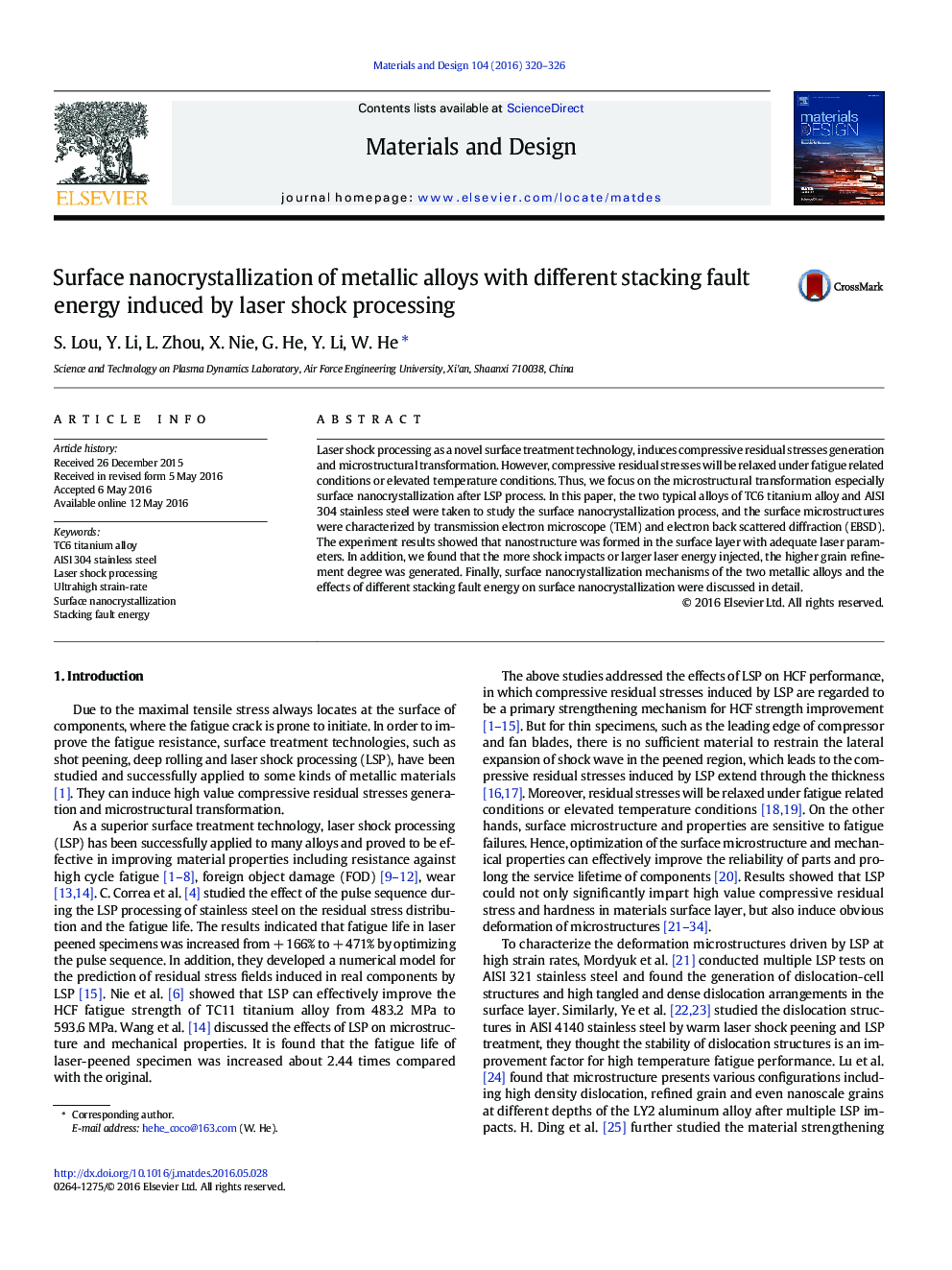| Article ID | Journal | Published Year | Pages | File Type |
|---|---|---|---|---|
| 827951 | Materials & Design | 2016 | 7 Pages |
•Surface nanostructure were realized in TC6 titanium alloy and AISI 304 stainless steel by ultra-high strain rate plastic deformation induced by LSP.•Surface nanocrystallization mechanisms of TC6 titanium alloy and AISI 304 stainless steel subjected to LSP and their difference were discussed.•The effects of stacking fault energy on surface nanocrystallization induced by LSP were summarized and discussed.
Laser shock processing as a novel surface treatment technology, induces compressive residual stresses generation and microstructural transformation. However, compressive residual stresses will be relaxed under fatigue related conditions or elevated temperature conditions. Thus, we focus on the microstructural transformation especially surface nanocrystallization after LSP process. In this paper, the two typical alloys of TC6 titanium alloy and AISI 304 stainless steel were taken to study the surface nanocrystallization process, and the surface microstructures were characterized by transmission electron microscope (TEM) and electron back scattered diffraction (EBSD). The experiment results showed that nanostructure was formed in the surface layer with adequate laser parameters. In addition, we found that the more shock impacts or larger laser energy injected, the higher grain refinement degree was generated. Finally, surface nanocrystallization mechanisms of the two metallic alloys and the effects of different stacking fault energy on surface nanocrystallization were discussed in detail.
Graphical abstractFigure optionsDownload full-size imageDownload as PowerPoint slide
